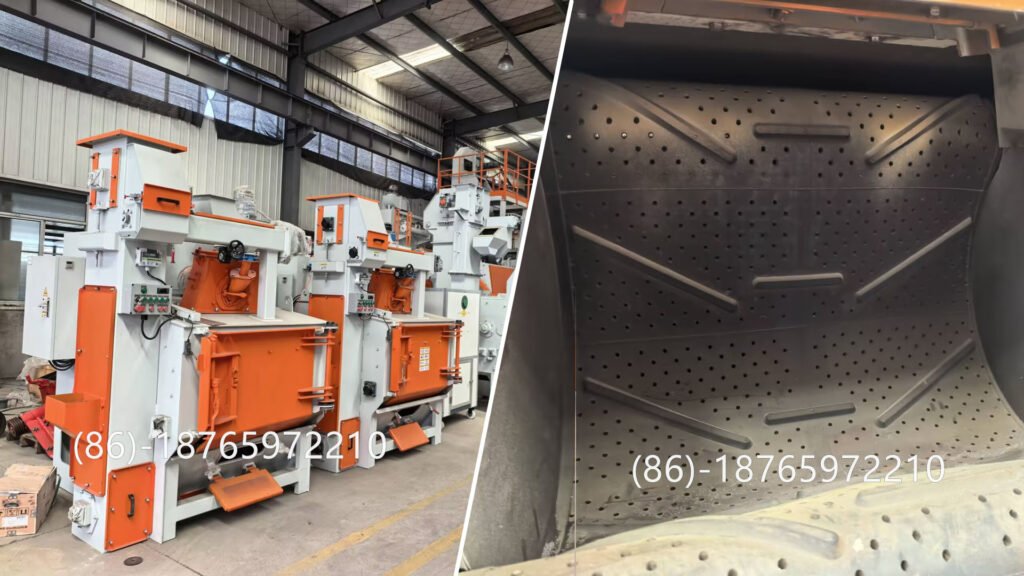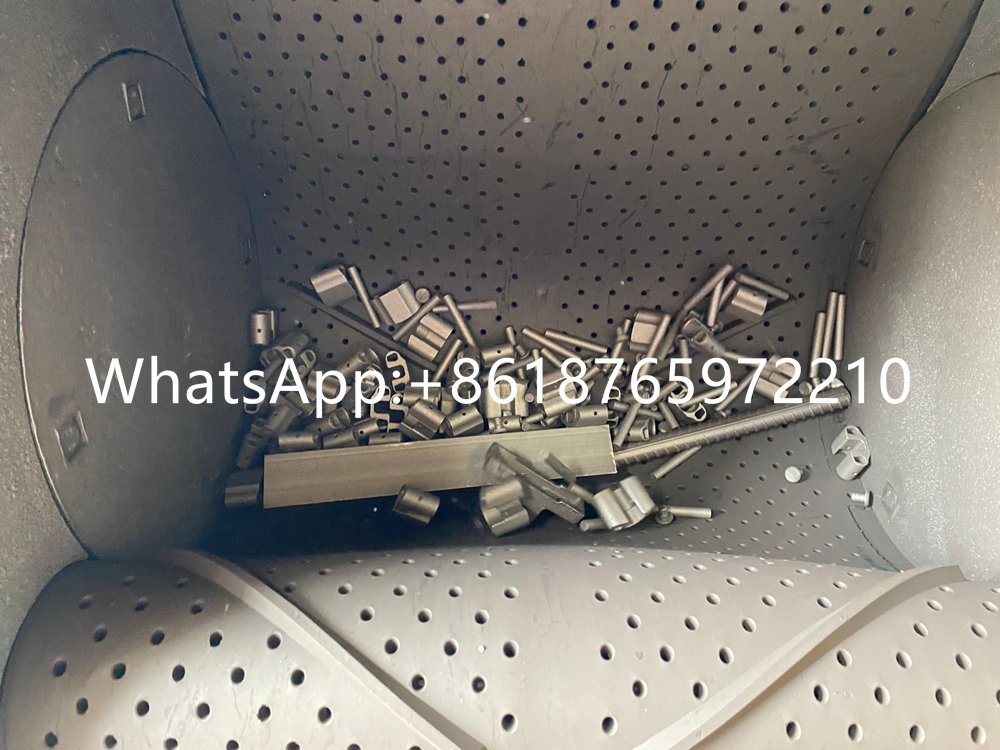Introduction
In modern foundries, forging plants, and fabrication workshops, surface preparation is a critical process that directly affects product quality, coating adhesion, and overall production efficiency. Among the various surface treatment methods available, the tumble belt shot blasting machine has become one of the most cost-effective solutions for cleaning, descaling, and strengthening small to medium-sized metal parts. This article provides a cost analysis of using tumble belt shot blasting machines for surface preparation, focusing on initial investment, operating costs, labor, and long-term economic benefits.
1. Initial Investment Cost
Compared with manual sandblasting or larger automatic shot blasting systems, tumble belt shot blasting machines are moderately priced. The purchase cost depends on factors such as machine capacity, belt type (rubber or steel), number of blast wheels, and dust collector configuration.
- Small-capacity machines (for parts < 40 kg) are affordable and suitable for small to medium workshops.
- Larger-capacity machines require higher upfront costs but deliver higher throughput and faster payback for mass production.
2. Operating Costs
The major operating costs include:
- Abrasive consumption: Steel shot or grit is recyclable, and a properly maintained machine can recycle abrasive hundreds of times before replacement.
- Power consumption: The blast wheel motor and dust collector consume energy, but modern designs use high-efficiency motors to reduce electricity costs.
- Maintenance and spare parts: Regular replacement of wear parts such as blast wheel blades, liners, and belts must be considered. Preventive maintenance helps lower unplanned downtime.
3. Labor Costs
Tumble belt machines are semi-automatic:
- Operators mainly load and unload workpieces.
- The blasting process itself is fully automatic, reducing the need for skilled manual blasting labor.
- This lowers direct labor costs significantly compared with manual sandblasting.
4. Productivity and Efficiency
High throughput and consistent surface quality make tumble belt machines economically attractive:
- Each cycle can process dozens of small parts simultaneously.
- Uniform cleaning improves coating adhesion, reducing rework and waste.
- Less operator fatigue and faster cycle times translate into lower cost per part.
5. Long-Term Economic Benefits
Although initial investment is higher than manual blasting equipment, the tumble belt shot blasting machine offers strong long-term returns:
- Durability: Robust design ensures service life of 10–15 years with proper maintenance.
- Reduced material waste: Recyclable abrasives reduce ongoing media expenses.
- Improved product quality: Consistent cleaning improves customer satisfaction and reduces rejection rates.

How a Tumble Shot Blasting Machine Can Reduce Costs and Improve Efficiency
In metalworking and foundry shops, surface preparation is one of the most time-consuming and cost-sensitive steps. Compared with manual sandblasting or larger, more complex blasting systems, the tumble shot blasting machine offers a balanced solution. From a production engineer’s point of view, here’s how it helps reduce costs and improve efficiency.
1. Lower Labor Costs
Manual blasting requires skilled operators and a lot of physical effort. With a tumble shot blasting machine, one operator only needs to load the drum, start the cycle, and unload the cleaned parts. The blasting itself is automatic.
- Less manpower needed.
- Lower training requirements.
- Reduced operator fatigue and fewer mistakes.
2. Efficient Use of Abrasive
The machine is designed to recycle steel shot or grit continuously. Abrasive only needs to be topped up occasionally to replace fines lost in dust collection.
- Hundreds of cycles possible before replacement.
- Lower media consumption compared with open blasting.
- More stable blasting quality due to controlled media size.
3. Consistent Surface Quality
Uniform tumbling ensures all sides of the parts are exposed to the blast stream. This produces even cleaning and surface roughness, which helps:
- Reduce rework and scrap.
- Improve coating or paint adhesion.
- Maintain stable product quality for mass production.

4. Higher Productivity per Cycle
Instead of blasting one part at a time, the tumble machine handles a full batch.
- Dozens of small to medium parts can be cleaned together.
- Cycle time is predictable, which simplifies production planning.
- Faster turnaround reduces bottlenecks in surface preparation.
5. Reduced Energy and Maintenance Costs
Although the machine consumes electricity for blast wheels and dust collection, it is more energy-efficient compared with compressed-air blasting. Wear parts such as wheel blades and liners need regular replacement, but maintenance is straightforward and downtime is limited.
- Energy cost per part is low.
- Preventive maintenance avoids expensive breakdowns.
- Long service life spreads investment over many years.
A tumble shot blasting machine helps reduce overall costs by cutting labor, abrasive, and energy expenses, while at the same time improving efficiency through batch processing, uniform cleaning, and stable operation. For workshops handling bulk small and medium workpieces, it is one of the most economical and practical choices for surface preparation.
Conclusion
When analyzing the total cost of ownership, the tumble belt shot blasting machine is one of the most cost-effective solutions for surface preparation of bulk small and medium-sized workpieces. While the initial investment is higher than manual alternatives, the savings in labor, the recycling efficiency of abrasives, and the long-term durability of the machine result in a lower overall cost per part. For workshops aiming to improve efficiency and maintain competitive production costs, investing in a tumble belt shot blasting machine is a practical and profitable choice.

